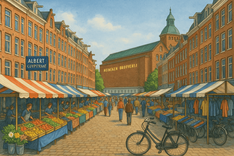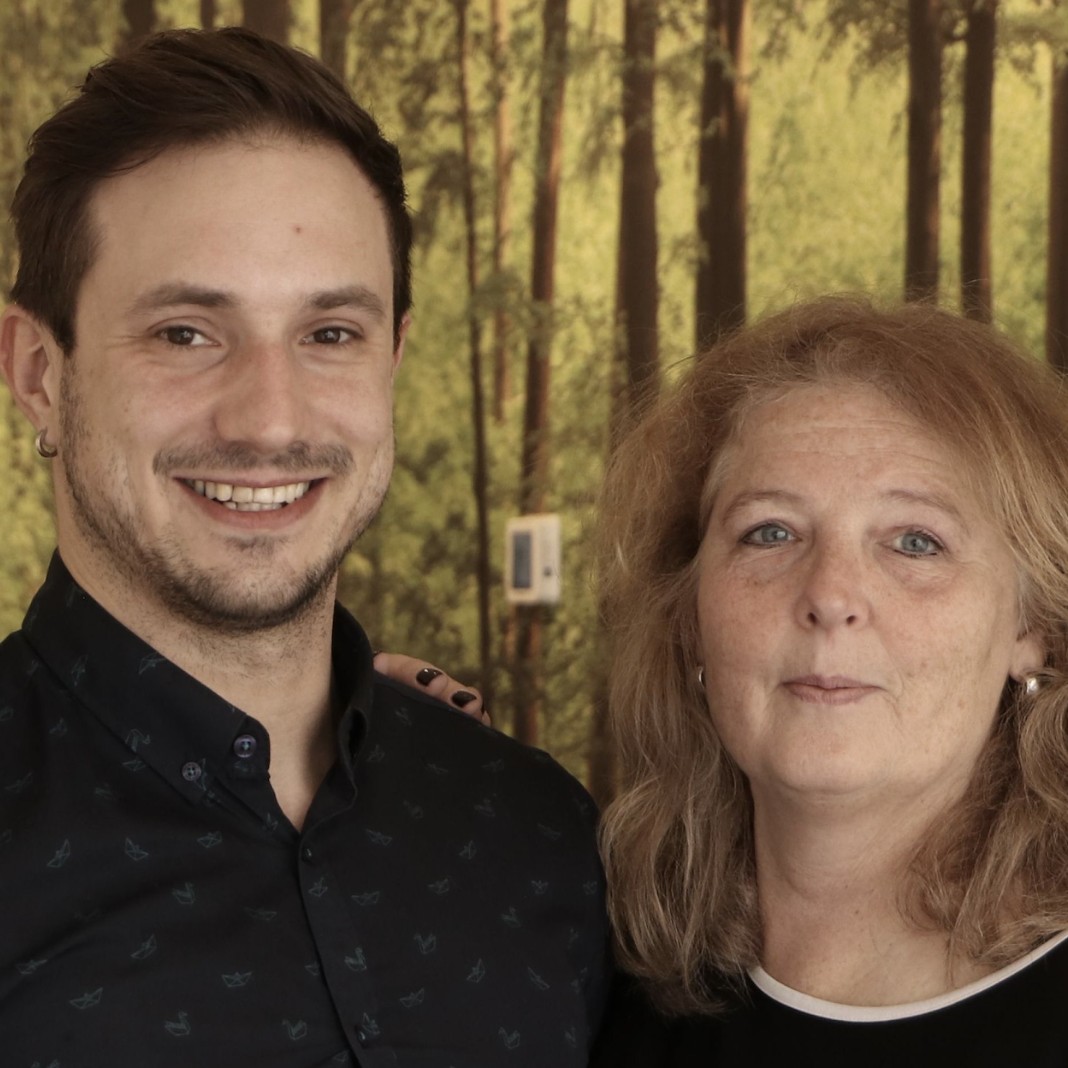Popular Neighborhoods in Amsterdam to Invest In
Popular neighborhoods in Amsterdam to invest in
Amsterdam has long been a haven for real estate investors. Persistent housing scarcity, a resilient local economy and the city’s global appeal combine to create stable, diversified rental demand across segments. Still, choosing the right district will define your cash flow, risk profile and operational workload. In this long‑form guide we tour the neighborhoods that stand out in 2025 and explain how to align your strategy with renter profiles, appreciation prospects and regulation. Rather than relying on reputation alone, we focus on micro‑location, transport access, development pipelines and competition levels—so you can make decisions with confidence.
The Jordaan: iconic scarcity with enduring appeal
The Jordaan distills Amsterdam’s charm into one compact grid of canals, courtyards and narrow streets dotted with boutiques and acclaimed eateries. For investors the key driver is structural scarcity. Supply is perennially tight, demand is broad and price sensitivity is low—meaning quality and location outrank small price deltas. The area’s protected streetscape encourages high‑spec renovations, which in turn support sustained value growth. Target tenants include expats, creative professionals and affluent couples who prioritize comfort, acoustics and energy performance. Expect negligible vacancy but higher entry prices and meticulous due diligence around building condition and owners’ association policies.
Investing in the Jordaan: yield mix, risk and management
Returns in the Jordaan skew toward low vacancy and appreciation rather than headline initial yield. Two‑bed layouts with efficient circulation and premium finishes perform best. Invest in acoustic upgrades and modern climate control; comfort and efficiency underpin rental value at this level. Responsiveness in management—swift communication, preventative maintenance and transparent service charges—reduces friction and drives renewals. Be mindful of heritage restrictions, permitting and split deeds; specialist advice up front saves time and cost. Net‑net the Jordaan is a premium micro‑market: expensive to enter, rewarding to hold.
De Pijp: urban energy and consistent renter demand
If the Jordaan embodies history, De Pijp represents lively, modern city living. Anchored by the Albert Cuyp Market and dense hospitality scene, the district appeals to young professionals and expats. A varied housing stock—from compact walk‑ups to larger family apartments—gives investors flexibility. Proximity to the center, the North/South metro and several parks sustains constant demand and premium rents. In this submarket, “turn‑key” is a differentiator: energy‑efficient homes with modern kitchens and bathrooms let faster and at stronger terms, while competition increasingly plays out in finish level and lifestyle positioning.
Investing in De Pijp: positioning and differentiation
Winning in De Pijp starts with a precise renter profile—say two working expats in a two‑bed flat—and an optimized layout to match. Prioritize storage, daylight and acoustics. For mid‑stay segments consider hotel‑grade furnishing (where compliant), or opt for high‑quality fixtures and appliances for longer contracts. In marketing, lead with lifestyle: professional photography, walking times to the metro and highlights of energy label and monthly costs. Financially, expect a balanced mix of yield and appreciation, underpinned by ongoing neighborhood upgrades and strong connectivity.
Amsterdam‑Noord: growth market for proactive investors
Over the last decade Amsterdam‑Noord has transformed from an industrial fringe into a fully‑fledged urban district with creative anchors, waterfront living and mature amenities. The North/South metro collapsed mental distance to the center, making Noord a logical choice for urban dwellers at relatively lower entry prices. For investors, that creates opportunities: new‑build with strong EPC scores, generous floorplates and shared facilities resonates with young families and international knowledge workers. Meanwhile redevelopment around the NDSM wharf and along the IJ adds cultural gravity and convenience that further boost livability and rental prospects.
Investing in Noord: new‑builds, appreciation and community
The best bets in Noord are energy‑efficient new‑builds and quality conversions. Tenants value elevators, bike storage, shared mobility and efficient heating/cooling. For investors, that translates into predictable maintenance and compelling service propositions. Micro‑location is decisive: adjacency to the metro, ferry links and waterfront projects materially lifts achievable rent and time‑to‑let. Community management—shared roof gardens, co‑working lounges, attentive HOA communication—supports retention and brand reputation for the scheme. Noord is, in short, a growth story pairing healthy initial yields with real upside in values, in assets designed for the future.
Oud‑Zuid: blue‑chip stability in the prime segment
Oud‑Zuid represents Amsterdam’s blue‑chip residential core: stately avenues, museums, top schools and proximity to parks like the Vondelpark. The tenant base skews toward diplomats, executives and families seeking space, quiet and prestige. Opportunities concentrate in impeccably maintained apartments with premium finishes, strong sound insulation and optional services via partners. While entry yields can be slimmer due to high acquisition prices, virtually permanent demand and minimal vacancy deliver predictability. In periods of macro uncertainty the district behaves defensively, anchoring portfolio performance.
Investing in Oud‑Zuid: quality standards and value preservation
Meeting international quality benchmarks is non‑negotiable here: bedroom air‑conditioning, advanced security, brand‑name appliances and a clean, representative entry set the tone. Document renovations thoroughly—including warranties and energy reporting—to lift both rental prospects and exit liquidity. Leases tend to be longer, with tenants paying for consistently high service. This is a hold market: stable cash flows and durable value rather than quick flips.
Oost and Amstelkwartier: emerging certainty with modern liveability
Amsterdam‑Oost and the Amstelkwartier demonstrate how urban renewal can fuse convenience with green, high‑quality living. Oost benefits from a strong food scene, green corridors and excellent public transport. The Amstelkwartier has evolved into a sustainable riverfront district of energy‑efficient towers and generous public space. For investors the mix of lower entry prices than the absolute prime areas and rising demand is compelling. The tenant base is diverse—starters, young families, expats—supporting steady occupancy and liquidity.
Investing in emerging districts: affordability, resilience and diversity
Future‑proofing is the winning theme: favorable energy labels, smart layouts and access to shared mobility drive structural preference. In rentals, durable materials, LED lighting and water‑saving fixtures reduce lifecycle costs while improving tenant satisfaction. Position the asset around commute times, parks and neighborhood services such as sports clubs and childcare. As these districts continue to mature, appreciation potential is significant, especially in micro‑locations with professional HOAs and strong development momentum.
Strategy: choosing the right district for your goals
Investors optimize for different outcomes: some chase maximum appreciation, others prioritize stable cash flow or low‑touch management. Build a decision matrix that weighs initial yield, vacancy risk, renovation budget, energy label, target tenant and distance to rapid transit. Tie that to your risk tolerance and holding period. Premium districts like the Jordaan and Oud‑Zuid deliver predictability and status but require higher capital. Growth markets such as Noord, Oost and the Amstelkwartier offer stronger price upside but call for more active asset management and closer monitoring of development and policy. Across all scenarios, quality, energy efficiency and professional presentation are persistent performance drivers.
Conclusion: invest in Amsterdam with City Homes
From iconic scarcity in the Jordaan to affordable growth in Noord, and from De Pijp’s urban energy to the modern liveability of Oost and the Amstelkwartier, Amsterdam offers an exceptional spectrum of opportunities. Investors who commit to quality, sustainability and professional leasing processes consistently outperform. Want tailored guidance on the district that fits your objectives—or support with acquisition, renovation and leasing? The City Homes team combines data‑driven insight with local expertise to guide you from first viewing to handover.








